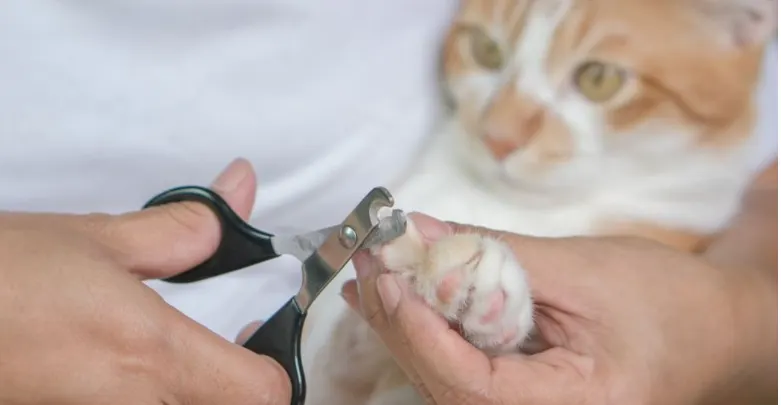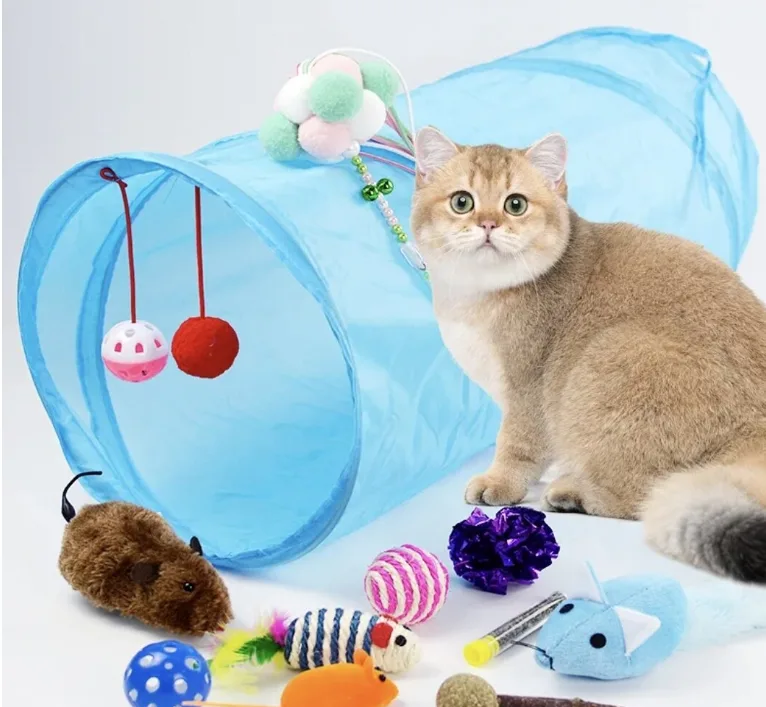The Cat Parents Guide: Essential Tips for New Cat Owners

The Cat Parents Guide is a valuable resource. It helps improve care for cats. It includes information on feeding, training, and keeping your cat safe and healthy.
Have you recently adopted a cat, or are you keen on stepping up your cat care routine? The Cat Parent’s Aide has every one of the hacks to keep your feline cheerful, solid, and respectful!
The Cat Parents Guide Fundamental Tips for New Feline Proprietors offers tips for new feline proprietors.It is for those bringing a cat into their home. This guide covers everything for a hassle free journey. It remembers ways to pick the right food and assisting a feline with utilizing its litter box.
Why Cats Make Good Pets: The Benefits of Feline Companionship
Cats are adored as allies for their numerous magnificent qualities. For example, they are autonomous and need little attention. So, they suit busy owners. Their playful character is quite entertaining to any household.
It is a common perception that cats can be lovable too, and most of the time love to be held. They also relieve stress and anxiety. They help during tough times. Each and every cat is different and contains something unique in its character.
Benefits
- Due to their nature, pets such as cats are often preferred by people with busy schedules.
- They also entertain the owners with their funny behavior.
- Cats bestow love and warmth on their owners without being attention seekers.
- Their distraction can work to lower the stress and anxiety levels of the owners.
- They love their owners but do not infringe on their space.
- Every cat has a unique character. It adds an interesting aspect to life.
How to Litter Train a Kitten: A Step-by-Step Guide
Choosing the Right Litter Box
Select a litter box that is the proper size for your little cat. It ought to be low enough for it to enter easily and open enough for it to move around.
Picking the Best Litter Material
Utilize a litter that is safe and agreeable for your cat. A large number incline toward clumping, unscented litter, as it mirrors natural conditions.
Establishing a Routine
Take your cat to the litter box after dinner and rest. Reliable timing assists them in pairing the container with restroom breaks.
Positive Reinforcement
Reward your cat with commendation or treats when it uses the litter box. This empowers appropriate conduct and helps it learn faster.
How to Stop a Cat from Scratching Furniture: Effective Strategies
- Provide Scratching Posts: Place scratching presents close on your goods. This gives your cat a real spot to scratch.
- Use deterrent sprays: Apply cat-safe sprays on your furniture to stop scratching. Felines loathe specific aromas, which can assist in safeguarding your things.
- Trim Your Cat’s Claws: Consistently trim your feline’s claws to limit harm when they do scratch. Utilize legitimate instruments to make the process safe and comfortable.
- Cover furniture with protectors: Use furniture covers to shield your upholstery from scratches. These can be effortlessly removed and washed.
- Reward Positive Behavior: Urge your cat to use scratching posts. Give treats and praise when it does. Encouraging feedback can advance beneficial routines.
- Consider Soft Paws or Nail Caps. They are plastic covers that fit over your cat’s claws. They prevent scratching damage.They are defensive and can help with defending your goods.
Best Wet Cat Food: Choosing Nutritional Options for Your Feline
Here’s a simple table layout for “Best Wet Cat Food: Choosing Nutritional Options for Your Feline”.
| Brand | Product Name | Key Ingredients | Protein Content | Flavor | Price Range | Special Features |
| Wellness | Wellness Core Pâté | Chicken, turkey, and salmon | 38% | Chicken | $3.00 – $4.00 | Grain-free, high-protein |
| Blue Buffalo | Blue Buffalo Wilderness High Protein | Chicken, fish, and vegetables | 42% | Salmon | $3.50 – $5.00 | Natural ingredients, grain-free |
| Hill’s Science Diet | Hill’s Science Diet Adult | Chicken, rice, and peas | 30% | Chicken | $2.50 – $4.00 | Grain-free, high-moisture |
| Tiki Cat | Tiki Cat Luau Wet Food | Chicken, fish, and coconut | 50% | Tuna | $2.00 – $3.50 | High protein, diverse flavours |
| Royal Canin | Royal Canin Feline Health Nutrition | Chicken, rice, and corn | 25% | Chicken | $2.00 – $3.50 | Tailored nutrition |
| Purina Pro Plan | Purina Pro Plan Savor Adult | Chicken, beef, and vegetables | 40% | Chicken | $1.50 – $2.50 | High protein, diverse flavors |
| Ziwi Peak | Ziwi Peak Wet Cat Food | Venison, fish, and organs | 35% | Lamb | $3.00 – $5.00 | Air-dried, high-quality ingredients |
| Instinct | Instinct Original Grain-Free | Chicken, fish, and vegetables | 38% | Rabbit | $2.50 – $4.00 | Grain-free, raw-inspired |
Cut Your Cat’s Claws: A Guide to Safe Nail Trimming

The Ultimate Guide to Safely Cutting Your Cat’s Nails
- Choose the right tools: Utilize a sharp top-notch feline nail trimmer or a pet nail processor for perfect work.
- Create a Calm Environment:Track down a tranquil space.Then relax your cat before trimming its nails.
- Get Your Cat Comfortable: Hold your cat in your lap or on a flat surface. Be careful to avoid any sudden movements.
- Identify the Quick: Avoid the pink region (quick) inside the nail. Cutting it can cause pain and bleeding.
- Trim Gradually: Start with just a couple of nails. Reward your cat with treats or praise to make it a positive experience.
- Regular Maintenance: Lay out a customary nail managing plan. This will keep your feline’s paws solid and forestall abundance.
Managing your feline’s hooks is significant for their wellbeing and your furnishings. It forestalls scratches and keeps their paws agreeable. Begin by getting the right instruments, similar to a couple of feline nail trimmers. Choose a peaceful, quiet climate to help your cat feel safe.
To manage your feline’s hooks, tenderly hold their paw and push on the cushion to expand the nail. Just trim the sharp tip and stay away from the pink part, known as the quick, which can bleed whenever cut. Reward your cat with treats and praise later. This will create a positive experience. Regular management will keep your feline cheerful and assist in safeguarding your home!
Understanding Your Cat’s Behavior: Common Traits and Tips
Decoding Body Language
Felines impart a lot through their nonverbal communication. Check their tail, ears, and stance to know their feelings.
Vocalizations and Their Meanings
Felines utilize different sounds to put themselves out there, from murmuring to whimpering. Realizing what these vocalizations mean can reinforce your bond with your feline companion.
Playful Instincts and Hunting Behaviors
Cats and grown-up felines share the same love of play. Knowing their hunting instincts can help you choose the right toys to keep them engaged.
Understanding Scratching and Marking
Scratching is a typical behavior of cats. It keeps their paws healthy. Providing designated scratching posts can fulfill this need while safeguarding your furnishings.
Take Feral Cats: Understanding Their Needs and How to Help
- Recognize Feral Cats: Grasp the contrast between wild and lost felines. Wild felines are normally unsocialized and live free of people.
- Provide Shelter: Create warm, safe havens for wild cats in harsh weather. Basic designs can safeguard them from the elements.
- Set Up Feeding Stations: Always feed and water the assigned areas. This urges wild felines to depend on you for sustenance.
- Spay and Neuter :Take part in Trap-Neuter-Return (TNR) projects to control the wild feline population. Fixing and neutering decrease overpopulation and work on their personal satisfaction.
- Monitor Health: Watch out for the well-being of wild felines. If you see signs of illness or injury, contact a nearby vet or rescue for help.
- Educate Others: Bring issues to light about the requirements of wild felines locally. Teaching others can advance sympathy and support for these creatures.
How To Introduce Your Cat to New Environments and People
Acquainting your feline with new spots and individuals can be a slow cycle. Begin by permitting your feline to investigate another space at its own pace. Keep it in a natural transporter or room where it has a solid sense of reassurance. Use quieting aromas or toys to assist it with loosening up in the new climate.
While acquainting your feline with new individuals move slowly. Allow your feline to move toward the individual first. Encourage gentle associations such as delicate voices and slow movements. Reward your feline with treats for positive behavior. This approach will help your cat feel safe in new situations. It will make the experience more pleasant for everyone.
Building a Strong Bond with Your Cat: Tips for New Owners
- Spend Quality Time Together : Dedicate time consistently to play and help out your cat. This fortifies your association and causes them to feel esteemed.
- Use Positive Reinforcement: Reward your feline with treats and commendation for good way of behaving. This structures trust and stimulates a positive relationship.
- Respect Their Space: Permit your feline to have its own protected areas. Felines value having a space where they can retreat and have a real sense of safety.
- Engage in Interactive Play: Use toys like plume wands or laser pointers. They will truly and intellectually invigorate your cat. Recess is a superb method for keeping them active.
- Learn Their Body Language : Focus on your feline’s non verbal communication and vocalizations. Understanding their signs will assist you in meeting their requirements successfully.
- Create a Routine:Lay out a day-to-day daily practice for taking care of recess and snuggles. Felines thrive on consistency. It helps them feel safe and connected to you.
Choosing the Right Toys for Your Cat’s Playtime

Choosing the right toys for your feline is significant for its joy and well-being. Felines love to play, and the right toys can keep them engaged and active. Search for toys that mimic hunting behaviors, like feather wands or toy mice. These can connect with your feline’s natural impulses and provide enjoyment.
It’s additionally fundamental to consider your feline’s character while picking toys. Some cats like toys they can chase. Others prefer soft toys to cuddle with. Continuously regulate your feline during recess to guarantee they are safe. Turn toys routinely to keep recess new and invigorating. With the right toys, your feline will be happy and animated.
Recognizing Signs of Stress in Cats: How to Help Your Pet Relax
Common Stress Indicators in Cats
Felines can show stress in various ways. They may hide, over-groom, or change their appetite. Monitoring these signs assists you in distinguishing when your feline is feeling restless.
Environmental Triggers of Stress
Changes in their situation like moving or new pets can stress cats. Recognizing these triggers permits you to do whatever it takes to limit their effects.
Creating a Calm Space
Assign a peaceful safe region in your home for your feline to withdraw to while feeling worried. Comfortable sheets and natural scents can help it feel safe.
Techniques to Help Your Cat Relax
Use quieting methods to help your cat unwind. Try gentle petting, soothing music or intuitive play. Ordinary schedules and slow acclimations to new circumstances can also lessen stress.
Setting Up a Comfortable Space for Your New Cat
Making an agreeable space for your new feline is fundamental for their prosperity. Begin by picking a peaceful region in your home where they can have a good sense of reassurance. Give a comfortable bed or cover for them to lay on.
Adding a couple toys can assist with keeping them engaged as they conform to their new environmental elements.Try to incorporate a litter box and food and water bowls in their space. This guarantees your feline has all that they need close by.
You can likewise put a scratching post to support solid ways of behaving. Permit your feline to investigate this space at their own speed. An agreeable and welcoming region will assist them with having a solid sense of safety and blissfulness in their new home.
.
